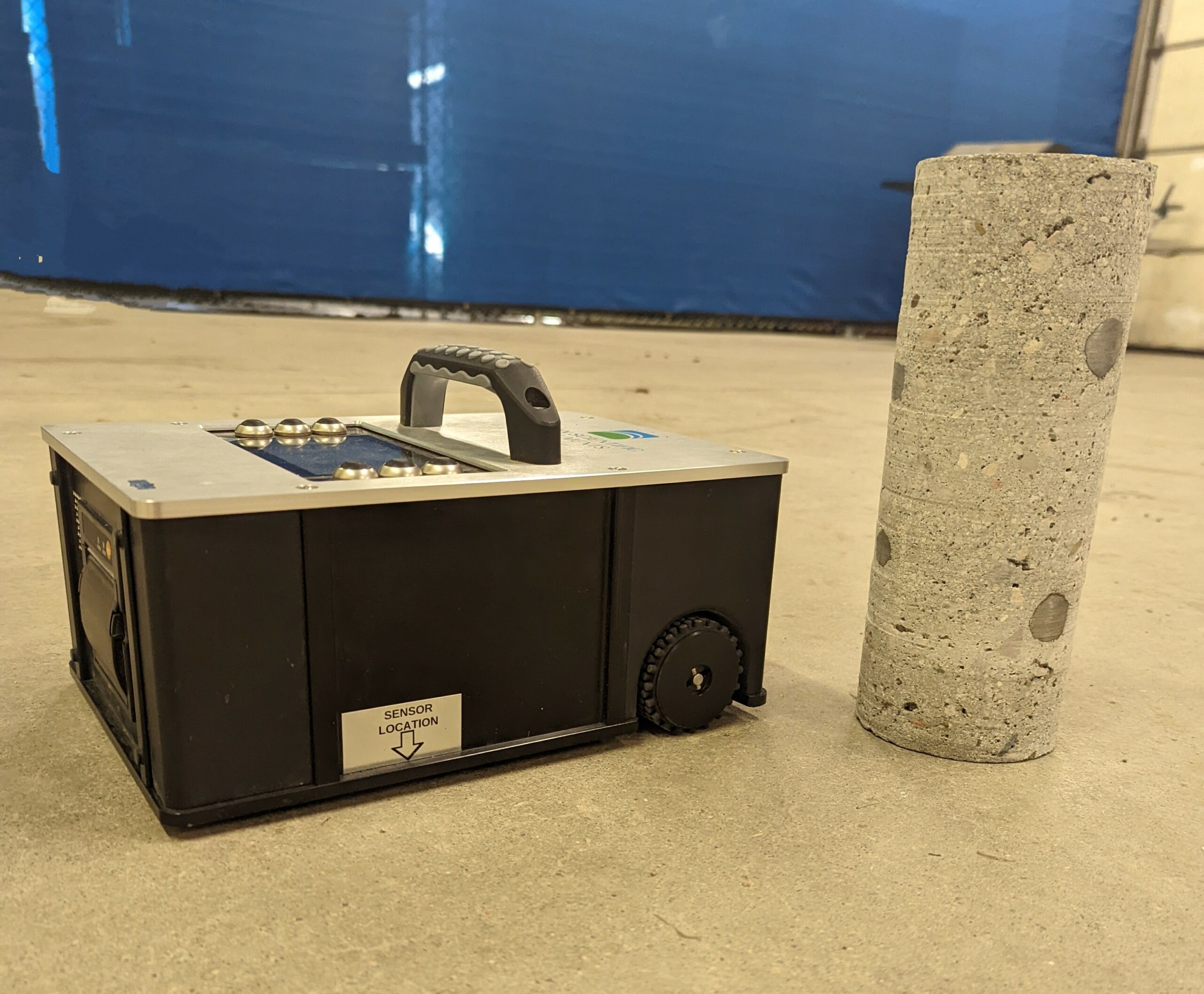By Arben Kalaveshi, P.E., associate principal/senior project engineer at Kumar & Associates, Inc.
Tribometry, the measurement of the surface friction between two materials, sounds like an exercise from a high school physics lab. But the measurement of friction is also a real-world test and is an important aspect of finished floors at construction projects. This measurement can give valuable insight into the propensity for slip and fall accidents for either dry or wet surfaces. Because the dynamic friction of a sliding object is lower than the static friction, a minimum Dynamic Coefficient of Friction (DCOF) value is commonly specified on projects.
Several testing apparatuses are available to obtain the DCOF value, but many variables can affect the result, and only the most reliable units can reliably conduct the test to help mitigate errors. The BOT-3000E is a device that operates in this fashion and follows the test method described in ANSI A326.3. This unit has been designed to avoid the use of components like springs, actuators, or dials that could wear out, affecting the accuracy of the test. Even still, there are many factors such as the cleanliness of the surface to be read and the condition of the friction pad at the base of the unit that needs to be considered. This test requires the use of sensitive equipment, and experience is necessary to provide meaningful results. When properly performed, it can give valuable information about the surface friction. When tests are conducted during construction, areas that are out of tolerance can be identified, and rework (milling, micro- etching, etc.) can be performed relatively easily.
Tribometry is an important test, but only one of several that are necessary to ensure a safe, productive floor system for both human workers and mobile robotic equipment. Other tests include surface gloss, average surface roughness, and floor flatness/levelness, and all require specialized equipment and experienced staff. Kumar recently provided the entire suite of
services listed above for a multi-story e-commerce building in Colorado Springs with an enclosed space of 3.8 million square feet. This project had a specification for dry DCOF, but wet DCOF is also commonly used. While a coefficient of 0.42 is standard for wet applications, dry friction coefficient specifications can vary from project to project. Similarly, the required range for average surface roughness (measured in microns or micro-inches), the maximum values for gloss (measured in gloss units, and at specific angles of reflection), and even the area defined as “local” for floor flatness (a unitless value that increases with fewer defects) can
vary for each project. For the project mentioned, all of the necessary parameters were well defined by the client to ensure successful testing and useful results. We identified failing areas, communicated the results to the contractor, and retested reworked areas to verify that the finished product met the client’s requirements. Because we were able to utilize in-house staff
and equipment, the tests could be performed dynamically alongside the contractor with little lead time, which resulted in a satisfied client, and safe, useable floors on all levels of the building.









